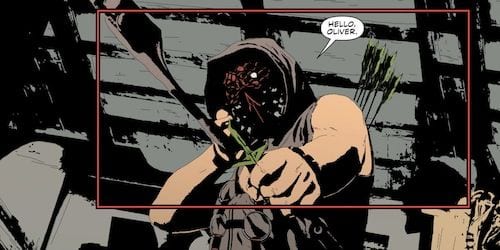
When DC restarted their entire continuity with the New 52, Green Arrow was a second-tier character. Sure, he had a lot of devoted fans, but DC simply didn’t consider Oliver Queen to be on the same level of popularity as Superman, Batman, Wonder Woman, Green Lantern, or even the Flash. To be fair, he wasn’t. Not until the CW Network aired the pilot for Arrow, that is. The action-heavy drama aimed at a younger audience—similar to Smallville’s demographic—made Green Arrow a viable revenue source beyond his most recent comic book iteration. Arrow was an instant success, and DC took notice.
The first sixteen issues of Green Arrow saw creative team changes every few issues, stories that were just plain bad, and an Ollie Queen who wasn’t just a far cry from his noble, pre-New 52 self, but was also a huge jerk. There was no clear direction for the Emerald Archer, and every issue seemed more convoluted and ridiculous than the last. On the flip side, Greg Berlanti, Marc Guggenheim, and Andrew Kreisberg decided to use Andy Diggle’s Green Arrow: Year One as the basic groundwork of the show, placing their series when Ollie returns to (renamed) Starling City after being marooned on a remote island for five years. The comicbook Ollie has been egotistical, uncouth, and bland, while the TV Ollie is cool, stoic, emotionally scarred, and fascinatingly talented for reasons we still don’t fully understand. It came as no surprise when DC announced superstar writer Jeff Lemire would be taking over the comicbook with Green Arrow #17, which would feature a new storyarc and characterization for Ollie that both more closely resemble the TV series.
That being said, the story in Green Arrow #17 can’t follow the TV series plot because Ollie has been operating as Green Arrow for a while already, while in Arrow, he’s just recently taken on the green hood (on top of the numerous differences between the comicbook and TV show universes). The biggest component of the show now being employed in the comic is the island on which Ollie was stranded for five years. Ollie in Arrow is still dealing with the emotional trauma of living on an island for so long and the subsequent return to the civilized world; he’s still got the behavior and attitude of a man who lived only to survive, but his skills as Starling City’s masked vigilante are all the better for it. By contrast, Ollie Queen in Green Arrow has been gone from the island a long time, and he’s lost the edge that made Green Arrow someone to be reckoned with.
The situation worsens when Ollie loses his company and entire fortune due to poorly managed finances, his seemingly endless absence from the office, and a general malaise surrounding Queen Industries. Ollie is left with nothing except a safe house containing the most basic elements of Green Arrow’s arsenal. In Green Arrow #17, Lemire turns the island into a metaphor for Ollie at his prime, while the villainous new archer Komodo is that life catching back up to him. If it wasn’t enough to take away all of his money and send a ridiculously deadly assassin after him, Lemire sticks it to Ollie yet again by killing off his support system of friends and colleagues in one fell swoop. Lemire wants to wipe the slate as clean as he possibly can and doing a good job.
Jeff Lemire’s vision for Green Arrow is a product of a few different expectations. The first is that making the comicbook a little more like the insanely popular TV show will make the comicbook all that more attractive to new readers. The second is that DC knows everything Lemire has retooled thus far has become a success, both in terms of quality and sales figures, and they want to reap those same rewards with Green Arrow. Third is that, from a readers perspective, Green Arrow has been terrible and it’s clear that Jeff Lemire can make the series better, which is the best move for us.
Green Arrow #17 fulfills all of these expectations. Lemire’s steady plotting paired with Andrea Sorrentino’s equally organic artwork result in the best issue of Green Arrow yet, by leaps and bounds. New villain Komodo is as fun to read as he is a danger to Ollie. And stripping Ollie of all his previous amenities—like friends, money, a reputation, fame, technology—will force him to prove that it’s the person behind the mask that makes the hero. “The Kill Machine” starts off in an excellent way and only points to better character development for Oliver Queen going forward. It’s been said that one does not really know what one is capable of until one is desperate enough. Ollie understood this once, and Jeff Lemire is now in a position to teach the Emerald Archer this lesson all over again. Sign me up for that class!

![Call for Papers: All Things Reconsidered [MUSIC] May-August 2024](https://www.popmatters.com/wp-content/uploads/2024/04/all-things-reconsidered-call-music-may-2024-720x380.jpg)



